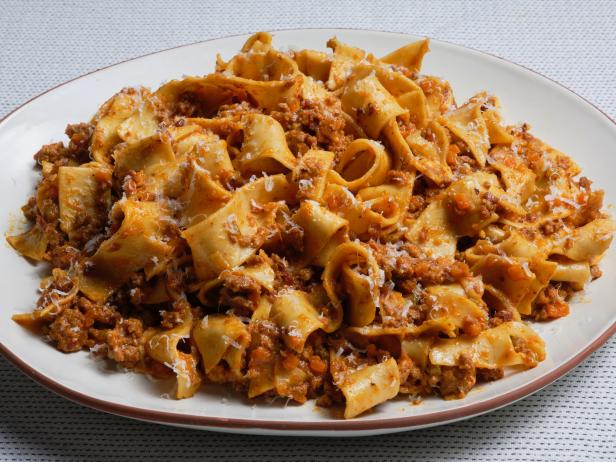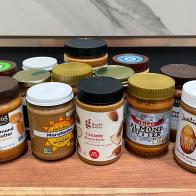A Complete Guide to Making Homemade Chicken Stock
This essential skill will take your cooking to new heights.

GMVozd/Getty Images
By Grace Elkus for Food Network Kitchen
Grace is a contributing writer at Food Network.
Homemade chicken stock is the gift that keeps on giving. Make a big batch today— it’s easy, we promise!—and you’ll be rewarded with flavor-packed soups, stews, gravies and more for weeks and months to come. Here’s everything you need to know, from what it is to how to freeze it.
What Is Chicken Stock?
Chicken stock is a versatile liquid made by simmering chicken bones and aromatics in water. Within this framework, ingredients and techniques may vary: some recipes might call for a classic mirepoix (onions, carrots and celery), while others will have you add leeks, tomato or even an apple. Some stocks start with raw bones, others call for roasting them for a richer, darker product. If you don’t feel comfortable cutting up the chicken yourself, ask your butcher to do it for you. Just be sure to request the back bone, which will form the base of your stock.
Once strained, chicken stock acts as a nutritious building block for an endless number of dishes, from creamy risottos to cozy pot pies to homemade chicken noodle soup, of course. If you've been cooking with store-bought stock, you'll instantly taste the difference.
What’s the Difference Between Chicken Stock, Chicken Broth and Bone Broth?
Chicken stock is made by simmering chicken bones in water for several hours, creating a rich flavor and mouthfeel. Chicken broth, on the other hand, relies primarily on chicken meat for flavor and simmers for a shorter period of time. Chicken stock is often left unseasoned (making it extra versatile), while chicken broth is seasoned with salt.
Bone broth is simmered for an even longer period of time than stock (up to two whole days), resulting in a flavorful, saltier and more gelatinous stock that’s designed to be sipped on its own. Bone broth recipes sometimes have you rub the chicken bones with tomato paste and roast them before simmering, resulting in extra umami flavor.

Madeleine_Steinbach/Getty Images
How to Make Chicken Stock
Follow this foolproof process and you'll be rewarded with liquid gold.
Step 1: Combine the Bones and Aromatics
Add the chicken backs and bones, vegetables, herbs and spices (like black peppercorns) to a large stock pot. If you’re starting with frozen chicken or vegetables, go ahead and toss them right in — no need to defrost them. You also don't need to worry about perfectly dicing the vegetables, since they're just there for flavor and will ultimately get strained out.
Step 2: Simmer and Skim the Stock
Add enough cold water to the pot to cover the chicken and aromatics by 3 inches (about 6 quarts of water). Bring to a boil over high heat. Reduce the heat to maintain a gentle simmer and cook, occasionally skimming the surface to remove foam, scum and fat, until the stock has reduced by about one third, about 3 hours. If the veggies or bones come above the water at any point, add more water to the pot.
Step 3: Strain the Stock
Remove the large pieces of vegetable and bone using a slotted spoon or tongs. Then, strain the stock through a fine mesh sieve into a second large stock pot.
Step 4: Cool the Stock
Fill the sink with enough ice water to come halfway up the sides of the pot. Nestle the pot into the ice bath and let the stock cool to room temperature.
Step 5: Store the Stock
Cover and refrigerate the stock for up to 3 days, or freeze for up to 3 months.

MarianVejcik/Getty Images
How Long to Simmer Chicken Stock
Chicken stock can be simmered for as little as 1 hour or up to 8 hours. Most often, you'll see recipes call for somewhere in between, about 3 to 4 hours. The longer the stock simmers, the more concentrated its flavor.
Not sure if your stock is done? Give it a try. If it tastes like chicken, it’s ready to strain. If it tastes like water, keep simmering.
How to Store Chicken Stock
After being cooled to room temperature, chicken stock can be stored in an airtight container in the refrigerator for up to 3 days or in the freezer for up to 3 months. Remove any solidified fat that rises to the surface of the stock before using it.
Wondering how to freeze chicken broth or stock? You have a few options. If freezing in airtight containers, be sure to leave ample room for expansion, about 1 inch. Alternatively, transfer the stock to individual quart-size bags, squeeze out all the air, and freeze flat on a sheet tray. Once frozen, store the bags upright in the freezer, where they'll take up minimal space. These smaller portions will also defrost much more quickly. As always, label and date anything you're freezing.

Bartosz Luczak/Getty Images
Ways to Use Chicken Stock
Put your homemade stock to work in these family-friendly recipes.

Caitlin Ochs, Caitlin Ochs, Caitlin Ochs
The Best Bolognese
Between the Parmesan rind, homemade chicken stock and 3 types of meat, this bolognese is packed with umami flavor. Though it's traditionally paired with fresh tagliatelle, a short noodle like rigatoni works well, too.

Matt Armendariz
The Best Chicken and Rice
Starting with homemade chicken stock and bone-in, skin-on chicken thighs ensures there's no shortage of flavor in this winning dinner. To add to its appeal, it comes together in just one skillet.

Matt Armendariz
Curried Chicken Thighs
This one-pot recipe has it all: tender chicken, a medley of vibrant veggies and fragrant basmati rice. There's a reason it gets rave reviews!

Matt Armendariz
Turn Off the Stove Chicken Soup
You didn't think we'd end without a soup, did you? This extra-easy one doubles as a magic trick: sauté aromatics, add chicken, rice and garlic, then add your stock and bring to a boil. Cover with a lid, turn off the heat and return to find a soup that tastes like it simmered all day long.
Related Links:




























































